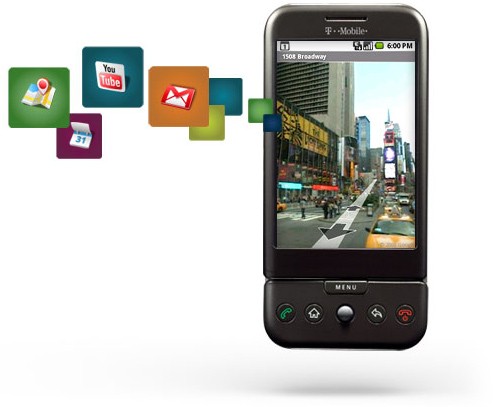 The real power of a Google phone and the Android mobile operating system isn’t just computing power, or search, or advertising, or maps. It’s the ability to connect people, places, and things like never before.
The real power of a Google phone and the Android mobile operating system isn’t just computing power, or search, or advertising, or maps. It’s the ability to connect people, places, and things like never before.
With the introduction Tuesday of the Google phone — dubbed G1 by wireless carrier T-Mobile — we’re starting to see the potential disruption that Google and Android will bring in the coming year or two. It’s even greater than what Apple and the iPhone have already accomplished.
Together, the so-called Google phone and the iPhone are disrupting the mobile industry with innovative, powerful, handy devices, applications, and services. Side by side, the Gphone and the iPhone have their differences but overall compliment one another, not compete with each other.
The iPhone is not unlike Apple, which is known for exquisitely designed hardware, user-friendly software, and a user experience like no other. The iPhone has a consumer, digital lifestyle feel to it, just like Apple products.
The Google phone, on the other hand, is not unlike “PC” in the famed “Mac” vs. “PC” television ads. This is not to say, however, that Google is Microsoft. Far from it.
The G1 — at least from what we’ve seen so far — has a “productivity” air to it, which is expected due to the nature of Google. The Android operating system, and the phone’s hardware, was developed first and foremost to showcase what Google does best — search along with Web applications like Maps, YouTube, Google Reader, Gmail, Calendar.
Continue reading »
 In case you haven’t heard, T-Mobile announced the world’s first — and for the time being, only — cell phone powered by Google’s open-source, mobile operating system today amid much pomp and circumstance.
In case you haven’t heard, T-Mobile announced the world’s first — and for the time being, only — cell phone powered by Google’s open-source, mobile operating system today amid much pomp and circumstance.








